Superyacht Marketing
The Art of Storytelling…
Virtually every project we do, photo or film, is based upon some sort of narrative around a yacht, a business or an experience. When creating a film, audience engagement is critical to its success. Success that is measured by the viewer receiving and understanding the desired message. This is where the art of storytelling comes in.
There are four tools we use to enhance the storytelling in our films:
Emotion: This is the biggie, the number one tool for success. Whether it’s a good cry or a side-splitting laugh, humans love and respond to emotion like nothing else. Just check out the most viewed videos on YouTube for proof. What’s more, we remember messages that include some emotion far more than those that don’t. Whether you want your audience to remember your brand, or your yacht, you simply can’t go past focusing on emotion in the story. This doesn’t mean you have to script a tear jerker, emotion can be depicted visually and, or, audibly. Slow motion, soundtrack, natural sounds, models laughing and interacting, as well as lighting, are just a few examples how emotion can be injected into the story. If we had to pick one of these as number one it would be the soundtrack which is why it deserves its own section.
Soundtrack: The value of the soundtrack for a film should not be underestimated. The music helps take the viewer on an emotional journey and can set the pace and tone of the film. Music can add drama and anticipation to a film, it can also provide an element of surprise. The right music, linked to the visuals, keeps things moving and is an essential part of storytelling. The song dictates the flow of the film and the flow of the shots.
Theme: A theme is developed for each film. This may come from us, the client, or may be something we work on together. Sometimes deciding the theme can be the most challenging aspect of the strategy because, not only must it be in synch with overall objectives, it needs to help the film stand out in the crowd so it’s remembered.
The theme becomes the central driver for the creative strategy setting the tone for how we approach the whole film. Whether we bring in brand associations, the type of models we use, the locations, how we shoot the film and the genre of the music. Sometimes we try to add in a twist – family separated who want to be together, a birthday or an element of surprise – a female yacht owner arriving by motorbike.
Models: The human touch or use of models, gives the audience a reference point for the story. Whether it is the owners of a design business talking about their business, three generations of family, or a single model on a yacht, the addition of people greatly enhances the story telling capability. The team have the flexibility to create different subplots, scenes and scenarios not otherwise possible. When it comes to specifically shooting a yacht film the use of models brings spaces and features to life, helping the audience picture themselves there. When the film is for a charter yacht this is especially useful.
When it comes to a film or video for your business or yacht give some thought to the story, or narrative, you’d like to create around what you are selling. It is the story that captures the audience’s imagination and makes your product or service memorable. When you need help give us a call, we can make sure your film stands out.






